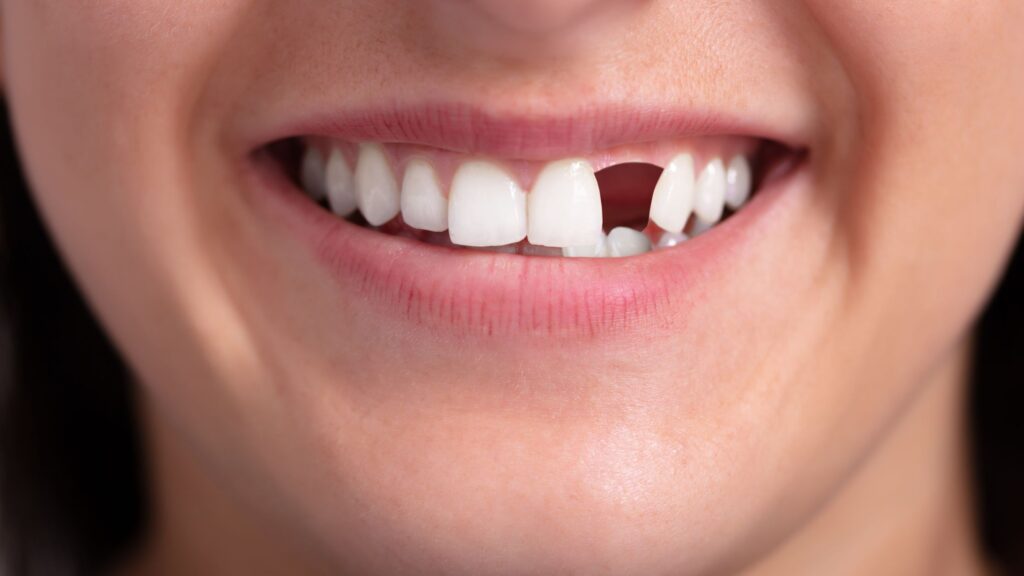Table of Contents
ToggleIntroduction to Dental Implants
Missing teeth can impact your life in ways you might not expect. Whether it’s a gap that makes you self-conscious about your smile or the difficulty of biting into your favorite foods, dealing with tooth loss can be frustrating. Fortunately, dental implants have emerged as one of the most effective solutions for missing teeth repair.
Imagine being able to eat, speak, and smile confidently again. Dental implants offer a permanent solution that closely mimics natural teeth. They provide stability and function while improving overall oral health. If you’re curious about how this procedure works and what it entails, you’ve come to the right place.
Let’s embark on an informative journey through the world of dental implants—exploring their benefits, types, procedures involved, aftercare tips, common myths surrounding them, and alternative options available for restoring your smile!
The Benefits of Dental Implants
Dental implants offer a transformative solution for individuals dealing with missing teeth. They provide stability that traditional dentures simply cannot match.
One of the standout benefits is improved functionality. With dental implants, you can enjoy your favorite foods without worry. Chewing becomes natural and comfortable again.
Aesthetic appeal plays a significant role as well. Implants look and feel like real teeth, enhancing your smile and boosting confidence.
Moreover, they contribute to better oral health. Unlike bridges, which require altering adjacent teeth, implants stand alone in the jawbone. This protects surrounding structures and helps maintain bone density over time.
Additionally, dental implants are durable. With proper care, they can last many years—often a lifetime—which makes them a cost-effective solution in the long run.
Having dental implants can positively impact speech clarity. You’ll speak more confidently without the fear of slippage or discomfort often associated with removable options.
Types of Dental Implants
Dental implants come in various types, each designed to address different needs for missing teeth repair. The most common type is the endosteal implant. This involves placing a titanium post directly into the jawbone. It acts as a sturdy foundation for artificial teeth.
Subperiosteal implants are another option. These sit on top of the jawbone, beneath the gum tissue but above the bone itself. They’re often selected for patients who may not have enough healthy jawbone and prefer to avoid additional surgical procedures.
Zygomatic implants are less common but crucial for those with significant bone loss in their upper jaw. These longer implants anchor into the cheekbone rather than relying solely on traditional methods.
Each type has its benefits and considerations, making it essential to consult with a dental professional to determine which option best suits individual circumstances and preferences.
The Procedure and Recovery Process
The dental implant procedure typically unfolds in stages. First, your dentist conducts a thorough evaluation, including X-rays and impressions of your mouth. This helps create a personalized treatment plan.
Once everything is set, the next step involves placing the implant into the jawbone. This titanium post acts as an artificial tooth root. After insertion, it takes time for the bone to fuse with the implant—a process known as osseointegration.
Recovery varies from person to person but generally includes some swelling and discomfort around the surgical site. Pain management options are readily available through prescribed medications or over-the-counter solutions.
Follow-up appointments are crucial during recovery to monitor healing and ensure proper integration of the implant. Patients often find this period manageable with good aftercare practices in place, paving the way for successful long-term results.
Aftercare and Maintenance for Dental Implants
After receiving dental implants, proper aftercare is essential to ensure their longevity and success. Start by following your dentist’s specific instructions closely. They’ll provide guidelines tailored to your situation.
Maintaining excellent oral hygiene is crucial. Brush twice daily and floss regularly, focusing on the implant site. Consider using an antibacterial mouthwash to reduce plaque buildup.
Regular check-ups are equally important. Schedule follow-up appointments with your dentist for professional cleanings and assessments of the implant’s condition.
Be mindful of what you eat during the initial healing phase. Stick to soft foods that won’t disturb the area around the implants.
Avoid habits like smoking or chewing hard objects, as they can jeopardize both healing and stability over time. Your commitment to aftercare will significantly influence your dental implants’ performance in years to come.
Common Myths and Misconceptions about Dental Implants
Dental implants often come with a cloud of misconceptions. Many believe they are too painful, but most patients report minimal discomfort during and after the procedure. Modern techniques and anesthesia make this process much more manageable.
Another myth is that dental implants are only for older adults. In reality, anyone with missing teeth can be considered a candidate, provided their jawbone is healthy enough to support them.
Some also think that dental implants require special care compared to natural teeth. The truth is, maintaining them involves regular brushing and flossing—just like your own teeth!
Many fear that implants look unnatural or awkward. With advancements in technology and materials, modern implants blend seamlessly with existing teeth, providing both functionality and aesthetics without compromise.
Alternative Options for Missing Teeth Repair
When considering missing teeth repair, dental implants aren’t the only solution. There are several effective alternatives to explore.
Bridges can fill gaps left by one or more missing teeth. They rely on adjacent teeth for support, providing a natural look and functionality.
Dentures offer another option, particularly for those with multiple missing teeth. These removable appliances come in full or partial styles, accommodating various needs.
Resin-bonded bridges are less invasive than traditional ones and work well for front teeth replacements. They use metal wings bonded to neighboring teeth for stability without extensive alterations.
Snap-on dentures present a modern twist on conventional designs. They secure onto existing gums using implants but can be removed easily when needed.
Each alternative has its own set of advantages and considerations. It’s crucial to consult with a dental professional to determine the best path tailored to individual circumstances.
Conclusion
Dental implants have emerged as a leading solution for missing teeth repair, offering numerous benefits that extend beyond aesthetics. They provide durability and functionality similar to natural teeth, improving your ability to eat, speak, and smile with confidence.
Understanding the different types of dental implants available allows patients to make informed choices tailored to their needs. The procedure may seem daunting at first glance; however, with proper care during the recovery process and adherence to aftercare guidelines, many individuals find it more manageable than expected.
Debunking common myths surrounding dental implants can alleviate fears while clarifying misconceptions about pain or longevity. It’s crucial also to explore alternative options for those who might not be suitable candidates for this treatment.
With advancements in dentistry continually evolving, missing teeth repair through dental implants remains one of the most effective paths toward regaining oral health and enhancing quality of life. Whether it’s restoring function or aesthetics—dental implants offer a reliable long-term solution worth considering.




